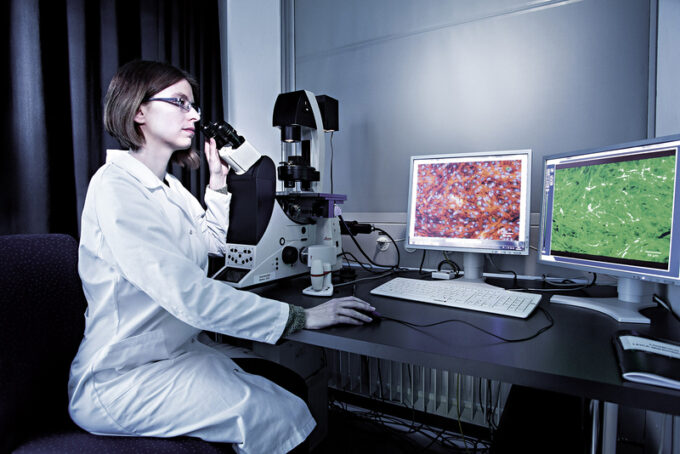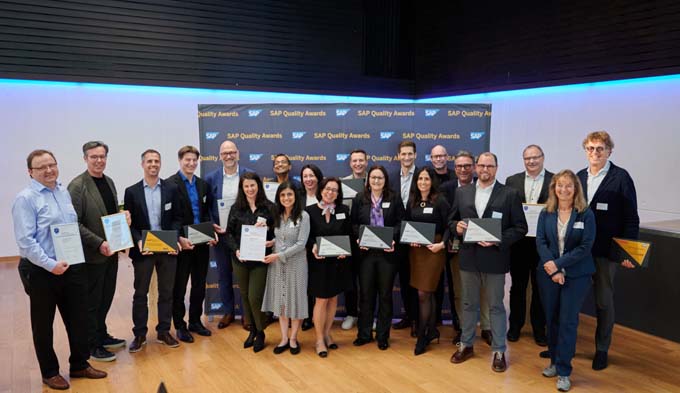Eawag: For the first time, a fish cell test is ISO-certified
For the first time, a toxicity test using cultured fish gill cells has been ISO-certified at Eawag. The test is used to determine the acute toxicity of water samples and chemicals to fish. This is a milestone, because until now there has been a lack of recognized alternatives to tests using live fish.

At Eawag, the Environmental Toxicology department achieved a major breakthrough. For ecotoxicological tests, more than 7,500 tests were conducted on fish in 2017 in Switzerland alone, for the protection of humans, animals and the environment. For years, Eawag has been exploring alternatives to reduce or even replace fish testing. One of these involves experiments with a rainbow trout gill cell line (RTgill-W1 cell line).
The acute toxicity of water samples and many chemicals for fish can be reliably determined with the cells grown in the laboratory. The Department of Environmental Toxicology headed by Prof. Kristin Schirmer has continuously refined the method over the past few years. Six laboratories from industry and universities have now participated in an international ring study and determined the robustness, transferability and comparability of the method with the RTgill-W1 cell line using six selected test chemicals.
The results show: All laboratories have been able to produce repeatable comparable results using the method. Recently, this methodology now also complies with ISO standards, which serve as standard references for researchers and manufacturers in tests. Prof. Kristin Schirmer provides insights into her certified research method.
Prof. Schirmer, what does this ISO certification mean now?
Our test can now be used by anyone who wants to test the acute fish toxicity of water samples or certain chemicals - from wastewater treatment plant operators to environmental agencies or chemical companies. The test is time-saving, cost-effective and, of course, does not require any test animals.
What are the hurdles to overcome to get a test ISO certified?
The process leading up to certification takes a very, very long time. The first experiments with the fish cell line we use date back to my doctoral thesis twenty years ago. At that time, we published a technical article for the first time that showed that rainbow trout gill cells can be used to detect acute fish toxicity in wastewater samples. But it was not until a few years later, in 2007, that we received funding from the European Chemical Industry Council (CEFIC) to further advance the method and make it usable for the investigation of chemicals.
In 2013, we published a study that showed that our method achieves the same toxicity values for over 30 chemicals as tests with live animals. A Norwegian colleague was so enthusiastic about the results that he proposed certification to the ISO commission. But now we had to prove that our method also worked in other laboratories. That's why we set up a ring study, which was organized by my colleague Melanie Fischer. In February of this year, after the successful ring study and several ballots, the ISO agreed to certify our method.
Would manufacturers of chemicals now be allowed to dispense with animal testing and rely solely on this test?
Unfortunately not. The regulatory guidelines of the OECD still apply to the production of chemicals. These require tests with live fish that are exposed to the chemical and see how many fish survive after four days at which concentrations. However, the test with the RTgill-W1 cells can now be used, for example, in product development to decide in advance whether an animal test is worthwhile at all. And we clearly hope that our test will also be recognised by the authorities as an alternative to animal testing in the future.
We have therefore also submitted this test to the OECD and are now in the process of filling out all the necessary forms. Thanks to the ISO certification, the chances are actually good that our alternative will soon become established.
Original publications:
Repeatability and reproducibility of the RTgill-W1 cell line assay for predicting fish acute toxicity academic.oup.com/toxsci/advance-article/doi/10.1093/toxsci/kfz057/5368498
ISO 21115:2019 Water quality - Determination of acute toxicity of water samples and chemicals to a fish gill cell line (RTgill-W1). www.iso.org/standard/69933.html
Predicting Fish Acute Toxicity Using a Fish Gill Cell Line-Based Toxicity Assay https://pubs.acs.org/doi/abs/10.1021/es303505z
Links
The Eawag spin-off Aquatox solutions offers the ISO-certified method.
Gill cells instead of fish for toxicity tests









